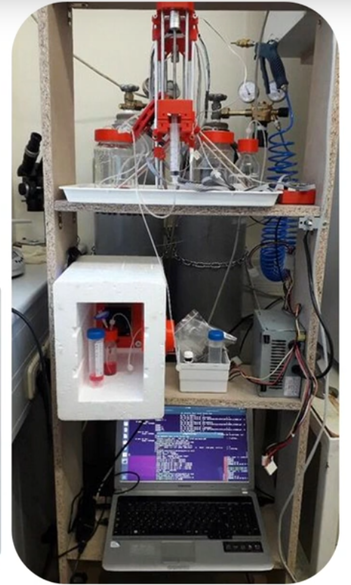Development of an automated medium-change system
Millifluidic developments for the design of an automated medium-change system

In the near future, induced pluripotent stem cells are expected to enable the personalised optimisation of drug treatment, the creation of pre-clinical disease models without the need for experimental animals, and the generation of artificial tissues to help heal damaged skin or heart muscle. These applications require the long-term maintenance of complex cell cultures (several weeks to months) and their complex, multi-dose pharmacological management. The manual execution of nutrient exchanges and treatments, which must be performed every 1-2 days at regular intervals, is a heavy workload for the staff, as they must be provided outside normal working hours, including weekends. The automated system we have developed helps with this, making each treatment protocol precisely scheduled and reproducible.
In collaboration with Dr. András Czirók's group, at the Department of Biological Physics of ELTE, we aim to develop a programmable fluid delivery system that can provide long-term, automated nutrient exchange and treatment of cell cultures in trays placed in a tissue culture incubator.
Capable of handling volumes of the order of millilitres, the unit uses syringe and peristaltic pumps to move the liquid, and its modular design offers a number of advantages.
- We have developed a multiplexer distribution mechanism to deliver a defined volume of liquid or a mixture of liquids from several liquid containers connected to the system to the target liquid compartments.
- Thanks to the built-in multiplexers and pumps, both the fluid to be loaded and the target fluid space to be reached can be selected from several options, and the target fluid space can be filled with the desired volume of fluid and the fluid can be removed from it.
- The system architecture can be expanded modularly by adding additional multiplexer units.
- The containers containing the liquid to be loaded may be stored in a refrigerated compartment integrated into the equipment.
- The sterilisation or flushing of the piping system conveying the fluids can be ensured by the auto-decontamination function of the device, which can be performed without touching the target fluid spaces, even during breaks in the system's basic operation, so that they can be treated independently without cross-contamination.
Brief introduction to the medium-change system

